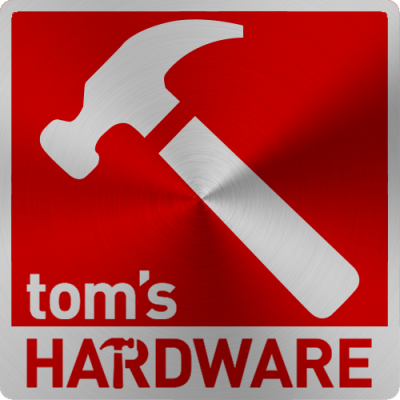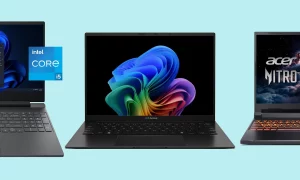Tom’s Hardware Weekly News Recap: May 14, 2017

On your behalf, dear readers, we were spread out across not one, but two tradeshows this week. We had reporters at both GTC in San Jose and Microsoft Build in Seattle. The highlight of the week (for me) was when we were covering two simultaneous keynotes and coordinating coverage of both with our crew back at home. Talk about work that gets your blood pumping. Journalists secretly love that kind of organized, frenetic chaos; it’s like catnip for us.
Anyway. Let’s start with GTC.
A New GPU Architecture And Lots And Lots Of AI
Nvidia took the wraps off of a new GPU architecture: Volta. [cue thunder and lightning effects] Drooling gamers should gently wipe the saliva from their chins, though, because Pascal is still Nvidia’s gaming architecture. It’s the big data folks who should be excited, because Volta is for deep learning.
Nvidia has been unabashed about its push into deep learning/machine learning/AI. Indeed, it’scommitted to training 100,000 developers on the technology this year, and it plans to fill up our cities with deep learning smarts with its “Metropolis” platform. (Does that sound like the name of our future dystopian robot overlord singularity, or is it just me?)
Further to that end (the AI part, not the dystopian future), it also announced the Tesla V100 accelerator and Tensor cores. In our writeup, we said: “The chip’s newest breakout feature is what Nvidia calls a ‘Tensor Core.’ According to Nvidia, Tensor Cores can make the Tesla V100 up to 12x faster for deep learning applications compared to the company’s previous Tesla P100 accelerator.”
Nvidia also announced a DGX-1 supercomputer crammed full of eight Volta-based V100s that gets you 960 TFLOPs from 40,960 CUDA cores. If that’s just a little much for you, there’s also the DGX Station system as well as the HGX-1 that’s been designed with a particular eye towards Microsoft’s Azure.
Right after Nvidia dropped all those AI bombs, its stock shot up, in case you were wondering how the market feels about these things.
Not content to just rattle the AI field, Nvidia had plenty of VR-related goodies to show. It announcedVRWorks Audio and 360 video SDKs, and custom PC builder AvaDirect went a little nuts with abeefy, Quadro P6000-powered, multi-user VR system. Further along the line of shared VR environments, Team Green unveiled what it called “Project Holodeck.” For those of us who have been waiting for someone to invent a real Star Trek-like Holodeck (who are we kidding, literally everyone who ever saw Holodeck episodes has been pining for the day), the name for this project is just a tadpremature. Simply, Project Holodeck is designed to bring photorealistic graphics to shared VR environments. Which is awesome, but not “episode set in the Old West full of actual danger”awesome.
Oh but that’s not all; we also saw some GDDR6 at GTC.
That was all from just one of the two tradeshows we covered this week, you guys.
Microsoft Build (Me Up Buttercup)
Even as we had Tom’s Hardware folks hitting up sunny San Jose for GTC, some of us were in the commensurately cloudy and rainy Seattle for Microsoft’s annual Build conference. Build is always like a box of chocolates, as it were, because it hits so many aspects of the company’s wide portfolio of devices, applications, software, and services. (And before anyone asks, no, there was no Surface phone.)
Considering Nvidia’s deep love of deep learning and AI, it’s perhaps especially notable that Day 1 of Build involved quite a bit of focus on AI. Our take on the whole thing is that Microsoft is doubling down on AI. That may seem at odds with Microsoft’s other stakes in devices and operating systems and software, but the company sees them all as connected. From the Build stage, CEO Satya Nadella said, “We’re moving from a mobile-first, cloud-first world to a world that’s made up of an intelligent cloud and an intelligent edge.”
As such, Microsoft announced new Cognitive Services, the addition of Adaptive Cards to its Bot Framework, Azure Batch AI Training, AI enhancements to Office products, and more.
This year’s box of chocolates also contained some choice treats including some details on what’s coming in the Fall Creators Update, including the much-needed Story Remix, which Nathaniel Mott described as “the next evolution of Windows Movie Maker,” as well as a new “Fluent Design Language.” Also Timeline, “Pick Up Where You Left Off,” cloud-based Clipboard, and OneDrive Files On Demand. Bang that link from earlier in this paragraph to learn more.
We at Tom’s Hardware are typically of the sort who aren’t impressed by whiz-bang onstage demos (what a bunch of curmudgeons), but I have to admit, the Story Remix demo was really something. Like iMovie did years ago, Story Remix looks on its face like a video creation tool that’s simultaneously easy to use and quite powerful, with easy editing, titles, and even animations. My first thought was that my YouTube-obsessed 7-year-old would love using this tool to learn how to edit her own videos (and that’s a compliment). If you’re part of the Insider Ring of Windows updates, you can get a sneak peek at Story Remix already.
Lost, to an extent, behind the buzz over the mixed reality announcements was the news that x86 applications will run on ARM chips at “near native” performance. (If you just had a Windows RT-induced flash of panic or rage, it’s okay, we feel you. Just take a deep breath. Theeeeere you go. Alright then, let’s proceed.) We’ve been expecting this development since it was teased late last year, but we learned more during one of the Build sessions (which you can watch yourself–scroll to bottom of this article).
Speaking of those mixed reality announcements, here they are in a nutshell: 1) Mixed reality dev kit are officially coming from Acer and HP, and we have recommended PC specs for developers working with the headsets. 2) Microsoft designed motion controllers for its mixed reality platform, so users won’t be limited to using an Xbox controller for input and navigation, and 3) those controllers will ship with the consumer version of Acer’s mixed reality HMD (which will cost $400), even though theheadset is capable of only VR, not MR.
We don’t want to overstate the importance of the Acer bundle announcement, but it is a rather big deal for the mixed reality team at Microsoft, as well as for Acer. Microsoft considers headsets like this one and the HoloLens to be devices on the same spectrum.
HoloLens, for as amazing a piece of hardware as it is, is not a consumer product, and it probably won’t be for a few more iterations. And unless you’re in the biz like we are, or know someone with a company that happens to use or develops for the HoloLens, you’ve probably never even tried a demo. You may never try one.
In that way, the HoloLens doesn’t feel like a Real Thing, and it makes Microsoft’s Windows Mixed Reality platform seem cloudy and ambiguous and ill-defined. But this Acer device is real, it’s coming to consumers this year, you’ll likely know someone who will have one, and it’s priced right. Even though it’s not a mixed reality device, it’s still a VR device that severely undercuts the Vive and Rift, and that’s a huge deal for the nascent XR market.
At Build, we also spent some hands-on time with 3Glasses’ dev kit setup for Windows Mixed Reality (again, VR-only). Look for more Build follow-up coverage this week.
Calling Security
We’d be remiss if we didn’t round up some serious security news that’s landed late this week and has persisted into the weekend. Thanks to some bad actors armed with ransomware, there was a scary, global-scale ransomware attack. You can pin the problems on legacy applications and theinability or unwillingness of people to patch or update them, and those problems don’t really have an easy, universal solution. To throw the world a bone and throw a wrench into the plans of “WannaCry,” Microsoft made the rare decision to push a critical security patch to its otherwise unsupported older operating systems.











